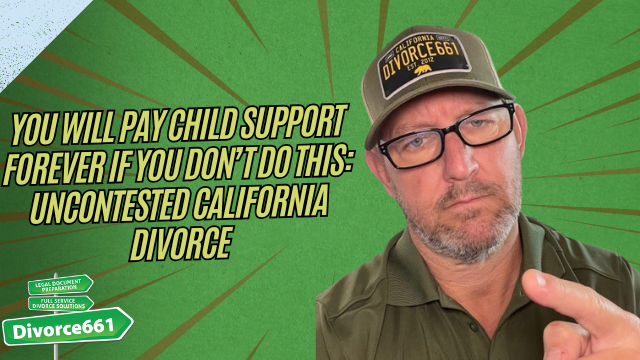Terminating Income Withholding Order for Child Support in California Divorce
When it comes to child support payments in California, many parents are familiar with the income withholding order—a legal mechanism that requires employers to deduct child support payments directly from a parent’s paycheck. However, what happens when it’s time to stop these payments? Understanding how to properly terminate an income withholding order is crucial to avoid unnecessary deductions and legal complications. In this article, we’ll walk you through the process of terminating an income withholding order for child support, based on insights from Tim Blankenship of Divorce661.
What Is an Income Withholding Order?
An income withholding order (IWO) is a court-issued directive that instructs a parent’s employer to withhold child support payments directly from their wages. This system ensures consistent and timely payments without requiring the paying parent to send money manually each month. IWOs are a common feature of child support enforcement following divorce or separation.
When Does Child Support Typically End?
Most child support orders specify the duration of payments, usually tied to the child’s age and educational status. The standard conditions for terminating child support in California generally include:
- The child turning 18 years old
- The child no longer being a full-time high school student
It’s important to review your specific court order carefully, as some orders may contain additional provisions that could extend the obligation to pay child support, such as ongoing educational needs or other circumstances.
Planning Ahead: Why Timing Matters
One of the most critical points Tim Blankenship emphasizes is the importance of planning ahead to terminate child support payments at the right time. Here’s why:
- The courts are not proactive: You cannot request the court to stop child support payments before the child actually meets the termination criteria (e.g., turning 18).
- Legal process takes time: After the child’s 18th birthday or graduation, you must file a motion with the court to officially terminate the income withholding order.
- Employer needs official documentation: Your employer will continue withholding payments until they receive a new court order stating that child support has ended.
Because of these factors, it’s wise to file the termination motion approximately 60 to 90 days before your child’s 18th birthday or anticipated graduation date. This helps ensure the court date can be scheduled promptly, and the updated order can be processed in time to stop ongoing deductions.
Step-by-Step Guide to Terminating the Income Withholding Order
Here’s a practical outline of the steps involved in terminating your income withholding order for child support:
- Check your court order: Confirm the conditions under which child support payments end, usually when the child turns 18 and is no longer in full-time high school.
- Gather documentation: Prepare proof such as the child’s birth certificate and high school diploma or transcript to show that the termination criteria have been met.
- File a motion to terminate child support: Submit a request to the court to stop child support payments. Ideally, this should be done 60 to 90 days before the child’s 18th birthday.
- Attend the court hearing: On or shortly after the child’s 18th birthday, present documentation to the judge confirming eligibility to terminate support.
- Obtain the court order: Once approved, the judge will issue an order terminating child support and the income withholding order.
- Provide the order to your employer: Submit the updated court order to your employer so they can stop withholding child support from your paycheck.
What to Expect After Filing
Even if your child has already turned 18 and you no longer owe child support, expect to continue paying for a few more months until the court process concludes and your employer receives the updated order. This delay is normal due to scheduling hearings, obtaining judicial signatures, and serving the employer with the new order.
Tim Blankenship advises that this transition period usually lasts about two to three months, so planning ahead helps minimize unnecessary payments.
Final Thoughts
Terminating an income withholding order for child support in California requires careful attention to timing and legal procedures. By understanding when child support ends, filing motions in advance, and following through with the court process, you can avoid overpaying and ensure the correct handling of your child support obligations.
If you’re approaching the point where child support should end, take proactive steps now. Review your court order, prepare necessary documentation, and file your motion early. This will help you navigate the legal system smoothly and stop income withholding at the appropriate time.
For more guidance on divorce and child support matters in California, consider reaching out to professionals like Tim Blankenship at Divorce661 or visit their website for additional resources and support.










